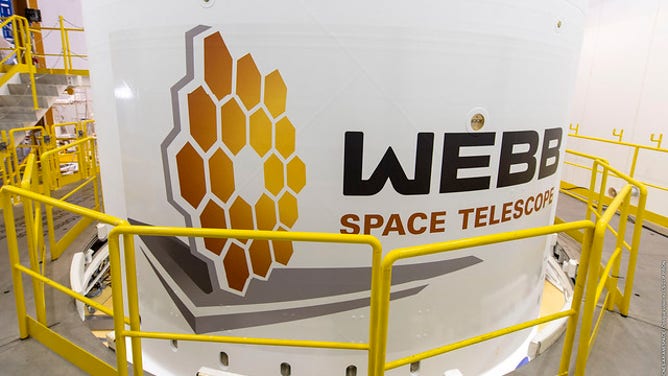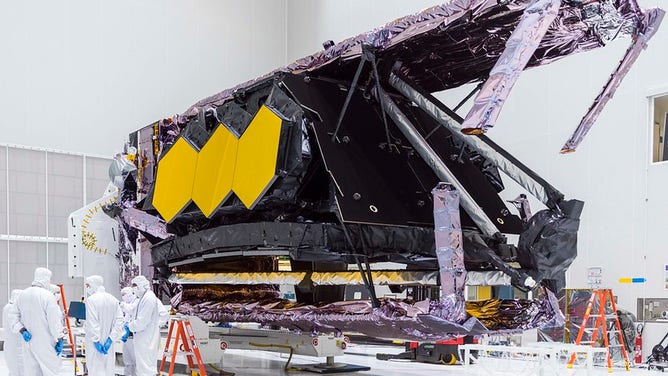James Webb Space Telescope meets its ride to space
Webb scheduled to launch Dec. 22 from Europe's Spaceport

Ariane 5’s fairing has been customised to accommodate the James Webb mission. (Image: ESA/CNES/Arianespace)
Teams continue to prepare the James Webb Space Telescope for its 1 million-mile journey in space, beginning with a rocket launch from French Guiana.
After a 5,000-journey from California to Europe's Spaceport in French Guiana, the Canadian, European Space Agency and NASA telescope has been undergoing final steps before launching on an Ariane 5 rocket. Liftoff is currently scheduled for Dec. 22.
On Dec. 6, teams finished fueling the spacecraft. The next day it was moved to the building to be encapsulated inside the Ariane 5 rocket's fairings, or nose cone.
Teams will carefully lift Webb to an upper platform before Webb can be connected to the Ariane 5’s upper stage. Then technicians will encapsulate Webb inside Ariane 5’s fairings or nose cone.
Folded up like an origami spacecraft, Webb fits into the rocket nose cone 5.4 meters in diameter and 17 meters tall. The observatory has 18-gold plated mirrors and a sun shield about the size of a tennis court.
Throughout the process, the $11 billion telescope's "vitals were meticulously monitored," according to NASA.
MORE: How to move a $10 billion space telescope 5,800 miles, avoid pirates and see back into the cosmos
After launch, the observatory will ultimately reach the L2 Lagrange Point, 1 million miles from Earth. This orbit was chosen to allow the telescope to stay aligned with Earth as it circles the sun. Webb's sun shield will protect the spacecraft from heat and radiation from the sun.
According to NASA, "Lagrange Points are positions in space where the gravitational forces of a two-body system like the Sun and the Earth produce enhanced regions of attraction and repulsion. These can be used by spacecraft to reduce fuel consumption needed to remain in position."

The James Webb Space Telescope inside the cleanroom at its launch site at Guiana Space Center, in French Guiana. (Image credit: NASA/Chris Gunn)
(NASA)
The space agency said L2 is perfect for cosmic observations because it's close enough for regular communication with Earth and can keep the sun behind the spacecraft for solar power.
It will take about a month for Webb to reach its position in space and an additional six months before science operations can begin. Webb's team will test all of its instruments and make sure everything is functioning as it should before observations start.
The James Webb Space Telescope is the most powerful space observatory ever built. It will peer deeper into the cosmos to unlock the secrets of the first galaxies.